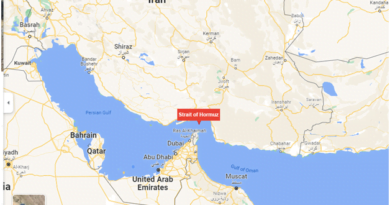NASA Voyager spacecraft
Context:
Both Voyager spacecraft are rushing away from Earth and into interstellar space. Yet for a portion of every year, both spacecrafts’ distances to Earth decrease.
Voyager 1
- The Voyager 1 was the first spacecraft to enter the heliosphere of the sun in 2012.
- The Voyager 1 was launched in 1977.
- It was launched to study the outer solar system and planets such as Saturn and Jupiter on its way.
- Voyager 2 is called the twin of Voyager 1.
- After operating for 44 years, it is still communicating with the Deep Space Network of NASA. The Deep Space Network of NASA is a worldwide space communication network located in the US, Spain and Australia.
Voyager 2
- Voyager 2 was launched in 1977, 16 days before Voyager 1, and both have travelled well beyond their original destinations.
- The spacecraft were built to last five years and conduct close-up studies of Jupiter and Saturn.
- As the spacecraft flew across the solar system, remote-control reprogramming was used to endow the Voyagers with greater capabilities than they possessed when they left Earth.
- It carries a working instrument that will provide first-of-its-kind observations of the nature of this gateway into interstellar space.
- It is slightly more than 18 billion kilometres from Earth. Its twin, Voyager 1, crossed this boundary in 2012.
- Their five-year lifespans have stretched to 41 years, making Voyager 2 NASA’s longest running mission.
Why is it so both spacecrafts’ distances to Earth decrease.?
- The answer is that for a few months each year, Earth in its orbit moves toward the spacecraft faster than they’re moving away. Earth’s motion around the sun is faster than the motion of the Voyager spacecraft.
- Earth moves through space at a speed of 67,000 miles per hour (30 km/s). Voyager 1 moves at a speed of 38,210 miles per hour (17 km/s). Voyager 2 moves at a speed of 35,000 miles per hour (15 km/s).
- So, for a portion of the year, Earth comes around the side of the sun and is speeding toward the spacecraft faster than they’re moving away.
Therefore their distances to Earth are getting closer, if only temporarily. They never change their outward motion. It is we who change.
Voyager Still in the solar system?
- While the probes have left the heliosphere, Voyager 1 and Voyager 2 have not yet left the solar system, and won’t be leaving any time soon.
- Mission operators still can communicate with Voyager 2 as it enters this new phase of its journey, but information —moving at the speed of light — takes about 16.5 hours to travel from the spacecraft to Earth.
- By comparison, light travelling from the Sun takes about eight minutes to reach Earth.
Accomplishments so far:
Voyager 2 is the only probe ever to study Neptune and Uranus during planetary flybys.
It is the second man-made object to leave our planet.
Voyager 2 is the only spacecraft to have visited all four gas giant planets — Jupiter, Saturn, Uranus and Neptune — and discovered 16 moons, as well as phenomena like Neptune’s mysteriously transient Great Dark Spot, the cracks in Europa’s ice shell, and ring features at every planet.
What is Interstellar space?
Scientists use the heliopause to mark where interstellar space begins, although depending on how you define our solar system it can stretch all the way to the Oort Cloud, which begins 1,000 times farther away from the sun than Earth’s orbit.
The Heliosphere:
The heliosphere is a bubble around the sun created by the outward flow of the solar wind from the sun and the opposing inward flow of the interstellar wind. That heliosphere is the region influenced by the dynamic properties of the sun that are carried in the solar wind–such as magnetic fields, energetic particles and solar wind plasma. The heliopause marks the end of the heliosphere and the beginning of interstellar space.
Source: NASA
You can find many articles on SPACE and SCIENCE AND TECHNOLOGY (part of GS III) in our website. Go through these articles share with your friends and post your views in comment section.



